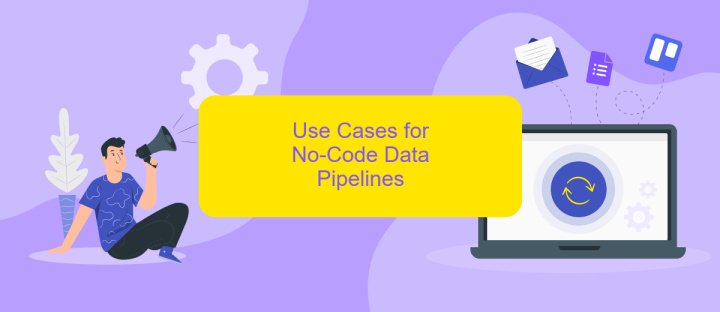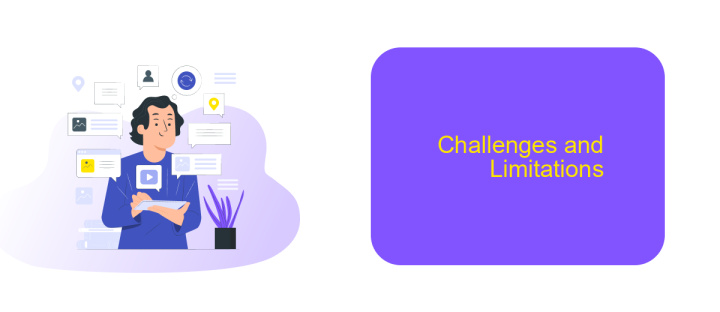No-Code Data Pipelines
No-code data pipelines are revolutionizing the way businesses handle data integration and processing. By eliminating the need for traditional coding skills, these platforms empower a broader range of users to create, manage, and optimize data workflows. This democratization of data management not only speeds up deployment but also fosters innovation and efficiency across various industries.
Introduction
No-Code Data Pipelines are revolutionizing the way businesses handle their data workflows. By eliminating the need for extensive coding knowledge, these tools empower non-technical users to easily design, deploy, and manage data pipelines. This democratization of data processing allows companies to be more agile and responsive to their data needs.
- Streamlined integration of various data sources
- Automated data transformation and cleaning
- Real-time data processing and analytics
- Cost-effective and scalable solutions
One notable service in this space is ApiX-Drive, which provides seamless integration capabilities for a wide range of applications and data sources. With ApiX-Drive, users can effortlessly connect their data without writing a single line of code, making it an invaluable tool for businesses looking to optimize their data workflows. As a result, companies can focus more on deriving insights and making data-driven decisions rather than getting bogged down by technical complexities.
Benefits of No-Code Data Pipelines

No-code data pipelines offer significant advantages for businesses by eliminating the need for extensive coding knowledge. This democratizes data management, allowing non-technical users to design, deploy, and maintain data workflows efficiently. As a result, organizations can accelerate their data integration processes, reducing time-to-market for data-driven insights and decisions. This shift enables teams to focus more on strategic initiatives rather than getting bogged down by technical complexities.
Furthermore, no-code platforms like ApiX-Drive simplify the integration of diverse data sources and applications. By providing intuitive interfaces and pre-built connectors, such platforms facilitate seamless data flow between systems without requiring manual coding. This not only enhances productivity but also ensures data accuracy and consistency across the organization. Ultimately, no-code data pipelines empower businesses to be more agile and responsive to changing market demands, fostering a culture of innovation and continuous improvement.
Use Cases for No-Code Data Pipelines

No-code data pipelines are revolutionizing the way businesses handle data integration and automation. These platforms enable users to create and manage data workflows without writing any code, making data processing accessible to non-technical users.
- Marketing Automation: No-code data pipelines can streamline marketing campaigns by integrating various data sources, such as CRM systems and email marketing platforms, to provide a unified view of customer interactions.
- Real-time Analytics: Businesses can use no-code tools to gather and process data from multiple sources in real-time, enabling quick decision-making based on up-to-date information.
- ETL Processes: Extract, Transform, Load (ETL) tasks can be simplified using no-code solutions, allowing users to easily extract data from different databases, transform it as needed, and load it into a data warehouse.
- Integration with Third-Party Services: Tools like ApiX-Drive facilitate the integration of various applications and services, enabling seamless data flow between different platforms without any coding.
By leveraging no-code data pipelines, organizations can reduce the time and resources required for data integration and processing. This democratizes data access, allowing teams to focus on deriving insights and making data-driven decisions without relying heavily on IT departments.
Challenges and Limitations

No-code data pipelines offer numerous advantages, but they also come with their own set of challenges and limitations. One of the primary concerns is the scalability of these solutions. While they are excellent for small to medium-sized projects, they may struggle to handle large-scale data operations efficiently.
Another significant challenge is the lack of flexibility. No-code platforms often provide a limited set of functionalities, which can be a constraint for complex data manipulation tasks. This can be particularly problematic for businesses with unique data processing needs that fall outside the capabilities of the no-code tools.
- Scalability issues for large datasets
- Limited flexibility for complex tasks
- Dependency on platform-specific features
- Potential security vulnerabilities
Additionally, integrating various data sources can be cumbersome. While services like ApiX-Drive can simplify this process by offering seamless integration capabilities, they might not cover all possible scenarios. Therefore, businesses must carefully evaluate their specific needs and limitations when opting for no-code data pipelines.
- Automate the work of an online store or landing
- Empower through integration
- Don't spend money on programmers and integrators
- Save time by automating routine tasks
Future of No-Code Data Pipelines
The future of no-code data pipelines is poised to revolutionize the way organizations manage and analyze their data. As businesses increasingly rely on data-driven decisions, the need for efficient, flexible, and user-friendly data pipeline solutions will continue to grow. No-code platforms will democratize data integration and processing, enabling non-technical users to build and manage complex data workflows with ease. This shift will not only reduce the dependency on IT departments but also accelerate time-to-insight, fostering a more agile and responsive business environment.
One of the key components driving this transformation is the integration of advanced automation tools and services like ApiX-Drive. These platforms simplify the process of connecting various data sources, ensuring seamless data flow across different systems. By leveraging such solutions, businesses can automate routine tasks, reduce human error, and focus on deriving actionable insights from their data. As no-code technologies continue to evolve, we can expect even more sophisticated features and capabilities, making data management more accessible and efficient for everyone.
FAQ
What is a No-Code Data Pipeline?
Who can benefit from No-Code Data Pipelines?
How do No-Code Data Pipelines ensure data security and compliance?
Can No-Code Data Pipelines handle complex data workflows?
What are some common use cases for No-Code Data Pipelines?
Time is the most valuable resource in today's business realities. By eliminating the routine from work processes, you will get more opportunities to implement the most daring plans and ideas. Choose – you can continue to waste time, money and nerves on inefficient solutions, or you can use ApiX-Drive, automating work processes and achieving results with minimal investment of money, effort and human resources.


